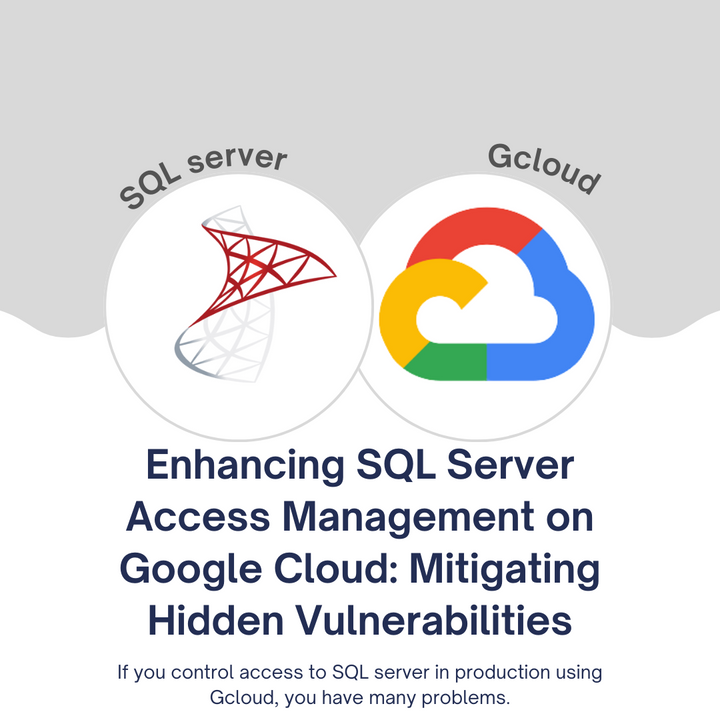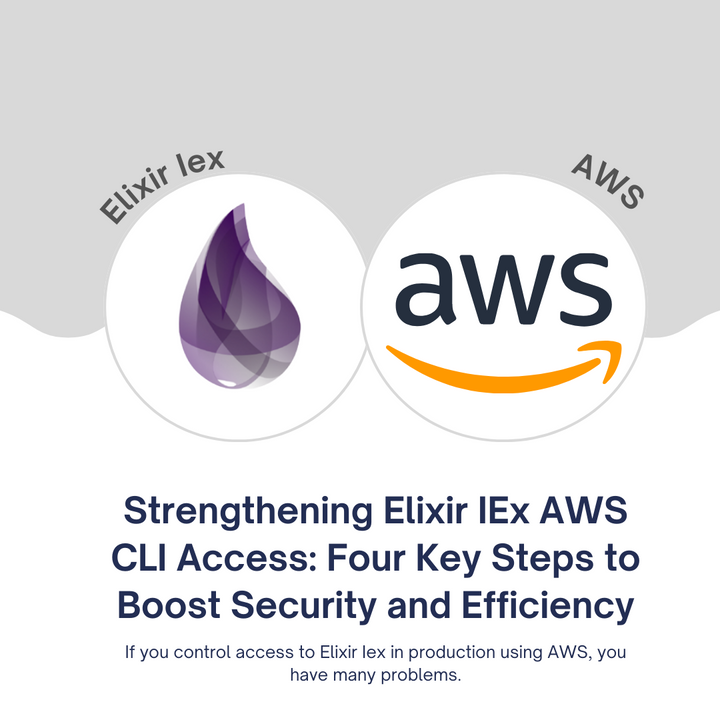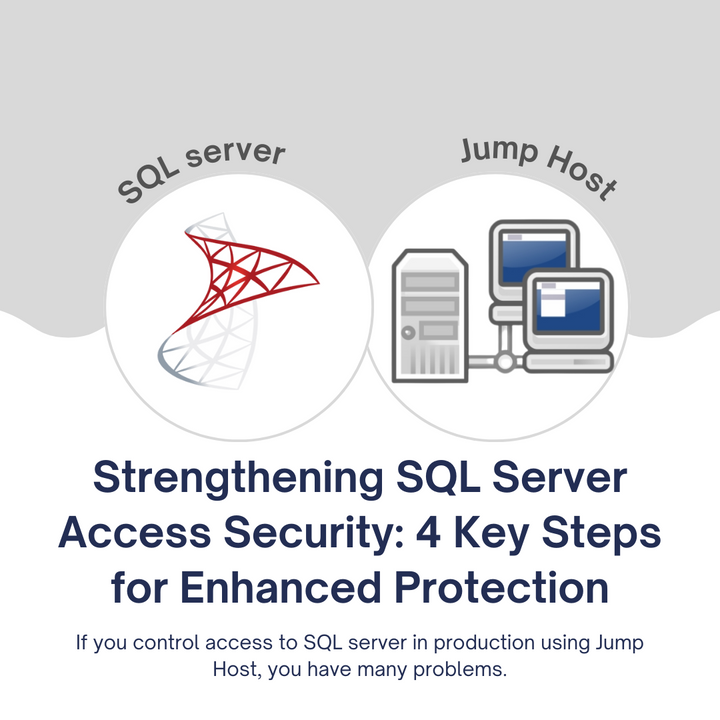The What, Why, and How of Secure Database Access for DBAs
The reason most database administrators (DBAs) face security breaches is because they often neglect or misunderstand the importance of secure database access. This happens because most DBAs underestimate the financial and reputational damage a data breach can cause, leading to a potential disaster.
In today's digital landscape, data is the lifeblood of organizations, making secure database access a critical component of data protection. We'll guide you through the key aspects of secure database access and why you, as a DBA, should master it.
We're going to walk you through:
- Understanding Secure Database Access
- The Why: Importance of Secure Database Access
- Implementing Secure Database Access
- Common Mistakes to Avoid
- Real-Life Applications of Secure Database Access
By the end of this post, you'll see how mastering secure database access benefits not only data security but also the overall health of your organization, ensuring it remains a trusted custodian of sensitive information.
Understanding Secure Database Access
Why is this important?Ensuring secure database access is critical to safeguard sensitive information and maintain regulatory compliance.
Stat: According to the Verizon Data Breach Investigations Report, 61% of data breaches involve hacking or using stolen credentials.
Benefit: Improved data security, reduced risks of data breaches, and compliance with data protection regulations.
Mistake: Neglecting to implement proper access controls, potentially leading to unauthorized data exposure.
Actionable Tip: Regularly review and update user access privileges and permissions to limit potential vulnerabilities.
Example: Restricting a junior DBA's access to read-only permissions for sensitive data, preventing accidental data modifications.
Takeaway: Prioritize secure database access as a fundamental element of your data protection strategy.
Secure database access isn't just about password protection; it's about managing and controlling who has access to your valuable data. Understanding this foundational concept is crucial for DBAs to execute their roles effectively.
While most people think of data breaches as external attacks, insider threats can be just as dangerous. Whether it's accidental data exposure or malicious intent, ensuring you have proper control over database access can prevent these mishaps.
Now, let's explore why it's crucial.
The Why: Importance of Secure Database Access
Why is this important?Protecting data from unauthorized access and tampering is essential for preserving trust and reputation.
Stat: The Ponemon Institute reports that the average cost of a data breach in 2020 was $3.86 million.
Benefit: Reduces financial losses, preserves organizational reputation, and maintains customer trust.
Mistake: Underestimating the financial and reputational damage a data breach can cause.
Actionable Tip: Educate stakeholders about the financial implications of insecure database access to gain support for security initiatives.
Example: An organization that suffered a data breach faced financial losses, legal repercussions, and loss of customer trust.
Takeaway: DBAs should be proactive in advocating for secure database access measures.
Secure database access is about more than just protecting data; it's about safeguarding your organization's financial well-being and reputation. When data breaches occur, the financial repercussions can be staggering, not to mention the loss of customer trust.
A data breach is a costly affair. It's not just about the immediate costs of addressing the breach but also the long-term financial implications. The Ponemon Institute's data breach cost statistic underscores the urgency of secure database access.
Now, let's delve into how to implement secure database access effectively.
Implementing Secure Database Access
Why is this important?Proper implementation ensures only authorized users can access and manipulate data.
Stat: According to a Trustwave study, 76% of data breaches in 2020 were financially motivated.
Benefit: Minimized financial losses, reduced risks, and adherence to legal requirements.
Mistake: Overcomplicating access controls, leading to operational inefficiencies.
Actionable Tip: Establish clear and concise access control policies to simplify management.
Example: Creating role-based access controls, allowing only HR personnel to access employee records.
Takeaway: Strive for a balance between security and efficiency when implementing secure database access.
Proper implementation is where the rubber meets the road. It's not just about theory; it's about putting your knowledge into practice. DBAs play a pivotal role in ensuring that only the right individuals can access and manipulate data within your databases.
As the Trustwave study shows, a significant number of data breaches are financially motivated. This means that attackers are often after sensitive financial data. If you don't have robust access controls in place, your organization may become a target for these malicious actors.
Now, let's discuss common mistakes to avoid in the implementation process.
Common Mistakes to Avoid
Why is this important?Identifying and preventing errors is integral to data security.
Stat: Gartner estimates that 99% of exploited vulnerabilities will continue to be known and preventable for years.
Benefit: Reduces the risk of security incidents, minimizing damage and costs.
Mistake: Failing to regularly update database software, leaving known vulnerabilities unaddressed.
Actionable Tip: Implement a robust patch management strategy to keep databases secure.
Example: An organization suffered a breach due to failing to patch a known vulnerability, resulting in a significant data loss.
Takeaway: Proactive management and patching can prevent known vulnerabilities from being exploited.
Database security isn't a set-it-and-forget-it task. Neglecting known vulnerabilities can lead to devastating consequences, as the Gartner statistic indicates.
To err is human, but not patching known vulnerabilities in your databases is a grave mistake. Let's explore how to prevent this from happening by understanding the real-life applications of secure database access.
Real-Life Applications of Secure Database Access
Why is this important?Understanding practical examples helps DBAs apply these concepts effectively.
Stat: 43% of data breaches involve internal actors, according to the 2020 Verizon Data Breach Investigations Report.
Benefit: Guards against internal data breaches, insider threats, and data mishandling.
Mistake: Failing to monitor and audit internal users' activities.
Actionable Tip: Set up real-time monitoring and audit trails for all database activities.
Example: A rogue employee gained unauthorized access to sensitive customer data, resulting in a significant breach.
Takeaway: Real-life examples underscore the importance of constant vigilance and monitoring.
Real-life examples make theoretical concepts tangible. Data breaches often involve internal actors, making it crucial to monitor and control internal access to databases.
In 2020, 43% of data breaches involved internal actors. This highlights the significance of securing data from within your organization. Rogue employees, mishandling of data, or insider threats are real issues that secure database access can prevent.
With the knowledge and tools discussed in this post, you can safeguard your organization's data, ensuring that only authorized personnel can access and manipulate it. Secure database access is not a one-time effort; it's an ongoing commitment to protect valuable assets and maintain organizational integrity.
In the fast-paced world of data and technology, mastering secure database access is not just an option; it's a necessity for any DBA looking to keep their organization's most valuable asset—data—safe from harm.



